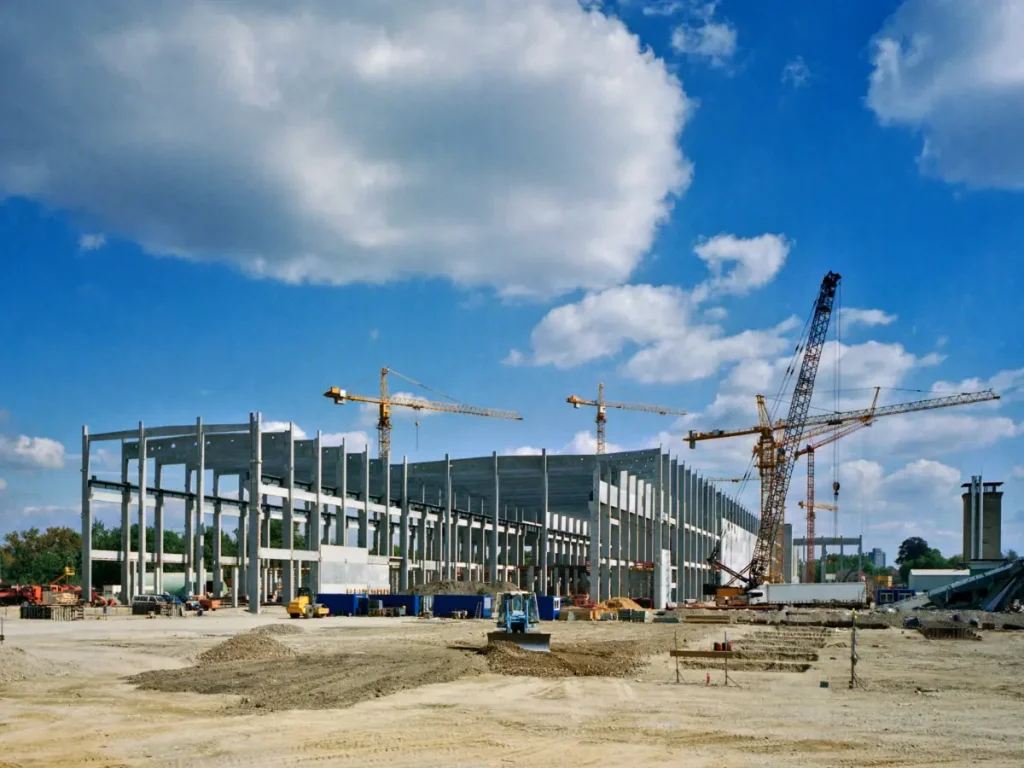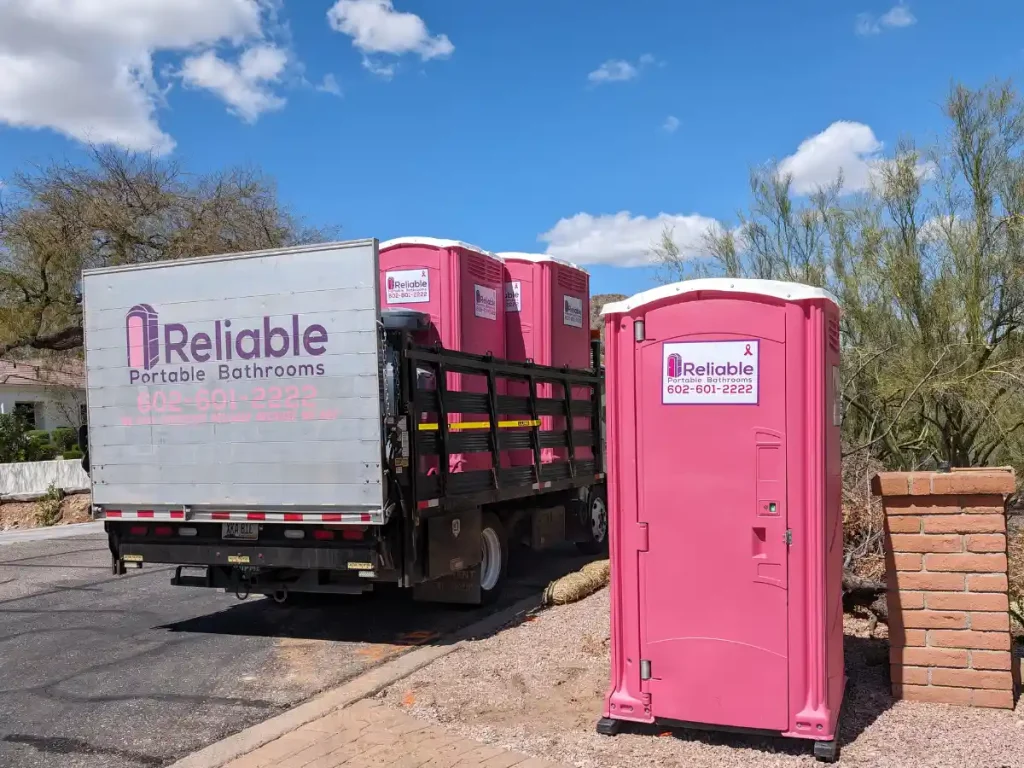Nobody gets thrilled talking about porta-potties at construction sites. But if you’re managing a project, these temporary toilets are actually a big deal. Not just for comfort, but because OSHA has specific rules about them that you need to follow.
This comprehensive guide will unravel these regulations, providing clear guidance to ensure your site meets all OSHA toilet requirements and avoids costly penalties.
Understanding OSHA’s Role in Workplace Safety on Construction Sites
OSHA (the Occupational Safety and Health Administration) doesn’t just care about hard hats and safety vests. It’s also serious about providing workers with decent bathroom facilities. And it makes sense, when nature calls, your crew needs somewhere clean and accessible to go!
OSHA created these rules in 1970 to keep workers healthy and safe. Without proper bathrooms, germs spread fast, workers get sick, and suddenly, your project timeline is in jeopardy. Plus, nobody wants to work at a site with gross bathroom situations.
OSHA’s guidelines for porta potty construction site facilities are designed to prevent unsanitary conditions that could spread disease.
Key OSHA Toilet Requirements for Construction Sites
 Here’s what OSHA says your construction site porta potty rental must absolutely have:
Here’s what OSHA says your construction site porta potty rental must absolutely have:
- Number of Facilities: The number of toilets required is directly related to the number of workers on site.
- For sites with 20 or fewer workers, at least one toilet is required.
- For larger sites, the general guideline is one toilet per 20 workers. This ensures that workers have reasonable access to restrooms without causing delays or discomfort.
- Accessibility and Proximity: OSHA mandates that restrooms be located within a reasonable distance from the worksite. This ensures that workers do not have to travel long distances, which could impact productivity and safety. Restroom facilities must also be accessible to workers with disabilities, aligning with the Americans with Disabilities Act (ADA) standards to ensure inclusivity.
- Hygiene and Handwashing Stations: OSHA also emphasizes hygiene. Proper sanitation facilities, including handwashing stations, are required. These facilities must be stocked with soap, water, and drying materials (like paper towels or hand dryers) to ensure basic hygiene practices can be followed. For porta potty construction site setups, this often means providing standalone handwashing stations or units with integrated sinks.
The Importance of Hygiene and Sanitation for Construction Worker Health
Keeping things clean on construction sites isn’t just about avoiding bad smells or dirt; it’s really about staying healthy and safe. If temporary toilet construction sites or other areas aren’t kept sanitary, people can get sick, which can mess with productivity and cause folks to miss work.
Keeping restrooms clean and well-maintained is just a smart way to help keep everyone healthy and the job running smoothly.
- Regular Cleaning and Maintenance: Regular cleaning schedules and waste disposal procedures are necessary. Facilities should be inspected frequently, and any issues rectified promptly to prevent them from escalating. Workers should be encouraged to report any problems with restroom facilities to ensure they are addressed swiftly. This helps in maintaining hygiene and fosters a culture of responsibility and awareness among workers.
- Adequate Supplies: Providing adequate supplies, such as hand sanitizers and toilet paper, is essential. Inadequate supplies can lead to frustration and non-compliance with hygiene practices. By ensuring that supplies are regularly replenished, site managers can support healthy habits and maintain a hygienic environment. This is especially crucial for porta potty construction site rentals where supplies need regular monitoring.
Addressing Privacy and Comfort in Construction Site Restrooms
Privacy and comfort matter when it comes to restrooms on construction sites. Everyone deserves a space where they can take care of personal stuff without feeling awkward or uncomfortable.
- Enclosed and Separate Units: Restroom facilities should be enclosed, with separate units for men and women if the workforce size warrants it, to respect individual privacy. Even for single-user porta potty construction site units, privacy is paramount.
- Spacious and Well-Ventilated Units: The size and design of restroom units should allow for sufficient space to move comfortably. Overcrowded or cramped units can create an unpleasant experience, discouraging workers from using the facilities when needed. Providing well-ventilated and spacious units can significantly enhance worker satisfaction and compliance with restroom usage.
- Proper Maintenance: Comfort extends to the maintenance of these facilities. Regular checks and prompt maintenance work keep restrooms in good condition. Defective or unclean facilities can demoralize workers and reflect poorly on site management. Ensuring that facilities are well-lit, ventilated, and free from odors is part of creating a comfortable and inviting space.
Ensuring OSHA Compliance and Training for Construction Personnel
Compliance with OSHA regulations requires more than just ticking boxes; it involves ongoing training and awareness.
- Worker Education: Workers should be educated on the importance of maintaining restroom cleanliness and hygiene. Training sessions can cover the proper use of facilities, sanitation practices, and the importance of reporting issues promptly.
- Regular Inspections and Audits: Site managers and supervisors play a crucial role in compliance by scheduling regular inspections and audits of restroom facilities. These inspections should assess the overall condition, supply levels, and cleanliness. By maintaining detailed records of these checks, managers can ensure that facilities are kept up to standards and address any issues quickly.
- Updated Training Programs: Training programs should be updated regularly to incorporate any changes in regulations or best practices. Keeping the workforce informed and engaged in compliance efforts creates a culture where safety and hygiene are prioritized. This helps answer the question: Is it illegal to use a porta potty if it doesn’t meet specific standards? The answer is yes, if it’s not compliant.
Common Challenges and Solutions for Construction Site Restrooms
Construction sites face several challenges when implementing OSHA’s restroom regulations.
- Remote Locations: Remote locations may complicate access to running water for handwashing stations. In such cases, alternative solutions like portable handwashing units or porta potty construction site units with integrated hand sanitizers can be employed to meet compliance standards.
- Worker Diversity and Turnover: High turnover and diversity of workers can make consistent hygiene practices difficult. Providing multilingual training materials and clear signage can help bridge communication gaps. Engaging workers in maintaining restroom cleanliness can also foster a sense of ownership and responsibility.
- Budget Constraints: Budget constraints are always a consideration, but cutting corners on restroom facilities can lead to costly penalties and health issues. Investing in quality, durable porta potty construction site rentals and maintenance services can prevent more significant expenses in the long run. Prioritizing these aspects in budget planning reflects a commitment to worker welfare and regulatory compliance.
Selecting the Right Portable Toilets for Your Construction Site
 Picking the right restrooms for a construction site depends on a few key things, like how many people are working, how long the project will last, and what the site itself is like. Thinking through all that helps you decide whether you need permanent toilets or if portable ones make more sense to meet OSHA toilet requirements.
Picking the right restrooms for a construction site depends on a few key things, like how many people are working, how long the project will last, and what the site itself is like. Thinking through all that helps you decide whether you need permanent toilets or if portable ones make more sense to meet OSHA toilet requirements.
Permanent restrooms can work well for longer projects with a steady crew and enough space, but they do come with higher upfront costs and maintenance.
On the flip side, portable restrooms are super flexible and great for sites that are always changing. Choosing good-quality portable units means you can stay compliant without breaking the bank. They’re a smart, adaptable option for projects that are always on the move.
Here are some options to check out:
- Standard Porta Potty Rentals: Ideal for most general construction needs.
- ADA Compliant Units: Essential for ensuring accessibility for all workers.
- Portable Restroom Trailers: Offer a more luxurious and comfortable experience, often with flushing toilets, sinks, and climate control, suitable for longer projects or supervisory staff.
Ensure Your Site is OSHA Compliant
Knowing and following OSHA toilet requirements for construction site restrooms is key to keeping things safe and compliant. Focusing on hygiene, accessibility, and comfort makes a big difference in how your crew feels and how well they work.
Renting portable toilets is an easy, effective way to meet those standards. High-quality units help you stay compliant and keep everyone comfortable.
Need restrooms that meet OSHA requirements? Get in touch with us—we’ve got rental options to fit all kinds of project needs. Use our calculator to estimate restroom needs and explore rental options that meet regulations.
